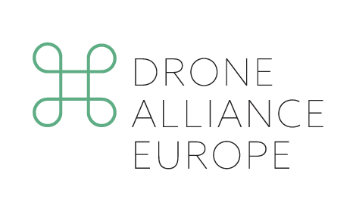The Drone Alliance Europe, a coalition of technology companies representing the commercial drone industry, has published a white paper on U-Space in which it proposes a decentralised, federated U-Space architecture, with ANSPs and U-Space service providers openly competing with digital links to legacy ATM systems.
Here are the major recommendations:
Decentralised, federated system. DAE’s primary recommendation is that the U-space system be decentralised and federated. While USPs must cooperate and collaborate among each other, multiple, overlapping USPs will ensure the variation of capabilities to match the drone operation, and competition will enhance those capabilities. Such a system will increase the safety of U-space even as it accommodates the increasing capacity of drone traffic.
Participation in U-space system. U-space services will be provided everywhere the services are required or needed, particularly as it will reduce the air risk calculation under SORA. A threshold question is which drone operations are not required to participate in a U-space system. As stated above, DAE believes that any BVLOS operation should be part of a U-space system. In areas with high density of traffic, broader participation will be necessary. However, in sparsely populated or remote areas, certain operations may operate without participating in a U-space system (i.e. filing a flight plan and obtaining authorisation, as well as communicating with other drone operators through one or more USPs). In these areas, remote ID broadcast technology could be leveraged to support separation between UAS.
Qualifications of USPs. DAE expects industry and ANSPs to be eligible to serve as USPs, provided they satisfy the requirements to perform their respective functions. DAE supports establishing criteria to approve a USP’s participation in the U-space system. Qualification criteria should be based on technical standards developed in consultation with industry and ANSPs; U-space standards such as those developed by ASD-STAN and ASTM should be used when applicable. DAE favors a single EU-wide approval framework that can be augmented by Member State CAAs with any necessary jurisdiction-specific requirements. It is desirable to establish a single set of qualification criteria to avoid varying and inconsistent approval processes among Member States.
Prioritisation. DAE envisions the need to provide priority to certain UAS emergency operations. This could include public (state) aircraft operations or civil operations engaged in search and rescue operations, delivering urgently needed medical supplies (e.g., organs or blood), or assisting first responders, among other applications. Order or priority should be the responsibility of the Commission to establish predetermined policies to be implemented by Member State CAAs.
Digital, rather than analog (voice) interfaces with Air Traffic Control. The U-space system must include a digital interface between Air Traffic Control/ANSPs and USPs. Drones should be permitted to transit between uncontrolled and controlled airspace. Policymakers should consider permitting USPs to facilitate automated approval via an automated interface with ATC. This issue will become more pressing with the advent of urban air mobility operations, which will feature large drones operating in both uncontrolled and controlled airspace.
Remote ID requirements. At a minimum, participants in the U-space system must be remotely identifiable online from a smartphone or other electronic device. All U-space participants should also be subject to geo-awareness requirements established under the Implementing and Delegated Regulations, with any additional requirements dependent on the risk of the operation.
Payment model for USP services. DAE believes the cost of maintaining a digitised Uspace system will be significantly less than current ATM costs, and more so to the extent decentralised U-space services are permitted. A CAA will incur costs to ensure certain safety critical information in its possession is made available through USPs, and reviewing and approving USPs. USPs will incur nonrecurring investment costs and annual recurring and maintenance costs, reducing the need for CAAs and non-USP ANSPs to incur those costs. Cost structures should reflect that USPs, and not CAAs, will provide ongoing deconfliction, identification or flight planning services.
For more information




